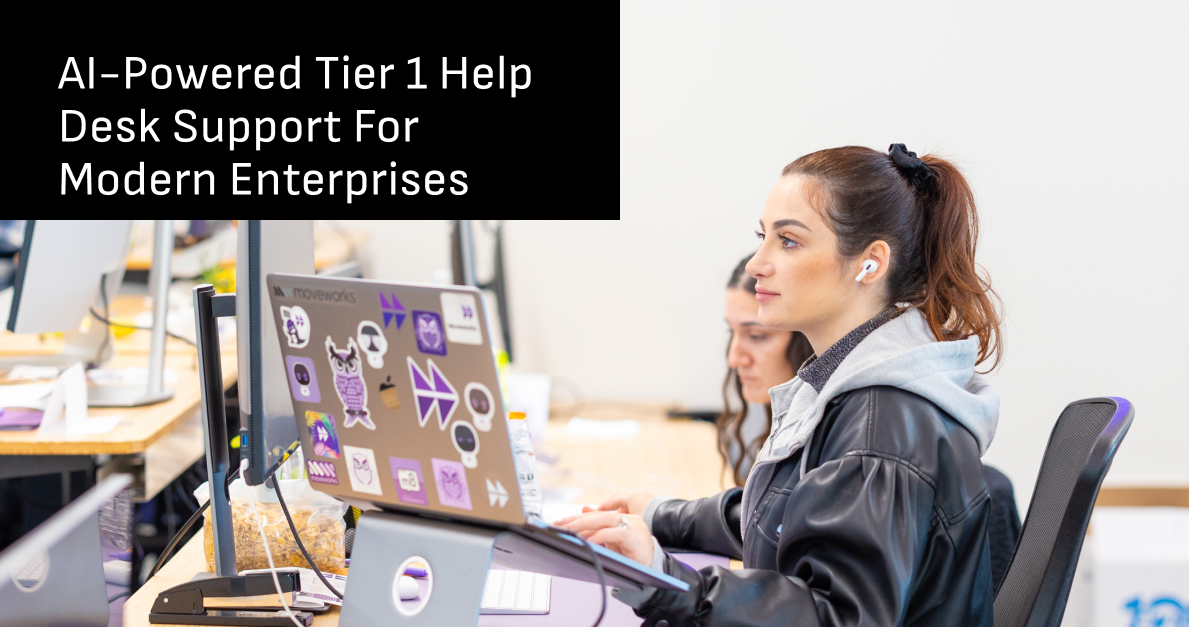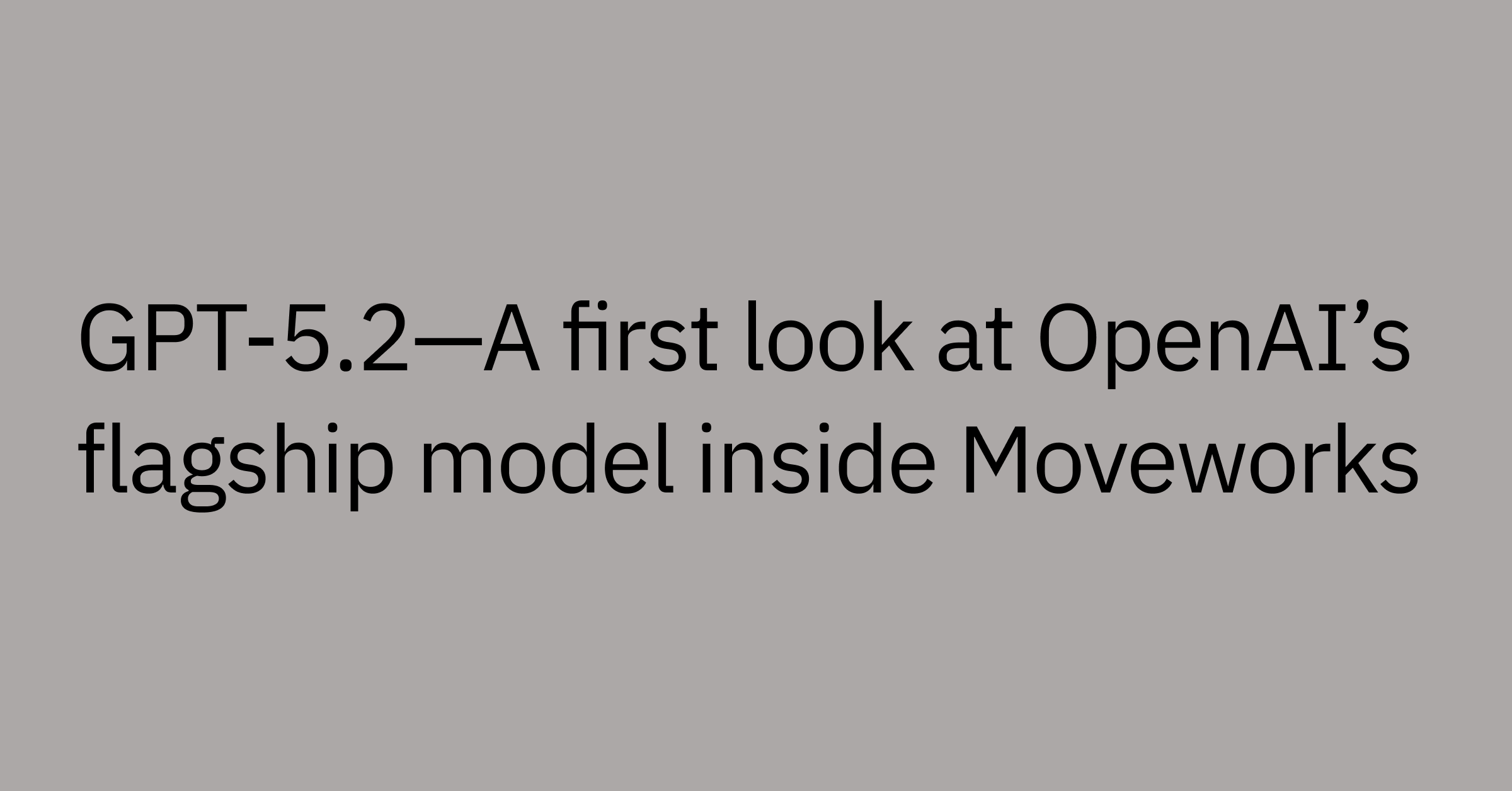Table of contents
Enterprises face a growing disconnect between employee expectations and support delivery. Employees want fast, intuitive support — but many organizations still rely on manual IT support processes that create delays and friction.
The challenge isn't just about speed, though. Scalability and quality are equally important.
As organizations grow and tech environments get more complicated, traditional technical support methods start to fall apart. Manual ticket routing, lengthy approval processes, and disconnected systems create bottlenecks that slow down the entire organization.
The hidden cost of manual tier 1 support
Support teams often manage hundreds of tickets monthly, with some enterprise service desks seeing volumes that exceed 1,000 tickets per month. Most of these requests are for simple, routine tasks — like password resets, software access requests, or unlocking accounts — which typically follow clear, predictable patterns and shouldn't have to require so much manual effort
Yet many organizations continue managing these requests through limited automations, disjointed applications, and approaches that still require significant human intervention: spreadsheets for access approvals, fragmented point solutions, or basic bots that can't execute real actions.
These methods struggle to keep pace with growing enterprise demands.
The result? Slower response times, inconsistent service delivery, and support teams stuck handling routine tasks instead of focusing on strategic work — like improving cybersecurity hygiene or driving technology adoption.
The solution comes in the form of a smarter approach — one that automates the bulk of tier 1 issues and lets support teams focus on work that makes a real, measurable difference for your organization.
What is tier 1 help desk support?
Tier 1 help desk support is the first line of technical assistance within an organization's IT support structure. These teams handle common employee requests, provide general information, and resolve straightforward IT issues — like password resets or locked accounts — that are less complex, tend to follow a clear pattern, and don't require deep technical expertise to resolve.
Tier 1 support is basically the first point of contact for most users. It handles high-volume, low-complexity issues that follow well-defined procedures, helping to reduce the support burden of more sophisticated higher tier teams, like Tier 2 and Tier 3.
So if an employee needs access to Zoom, can’t log into their email, or has a simple software question, tier 1 is usually where their request gets handled first within the IT help desk.
Within the broader support hierarchy:
- Tier 1 support handles speed and volume for repeatable requests
- Tier 2 support handles more complex technical issues requiring deeper expertise
- Tier 3 support manages highly specialized problems or escalations
This distinction matters because it defines what tier 1 teams should (and shouldn't) spend time managing.
Common tier 1 support services
Tier 1 support teams typically manage a consistent set of IT requests that occur frequently across enterprise environments. These requests are typically high-volume, low-complexity, and follow standard procedures:
- Password resets and account lockouts: Helping employees regain access to systems and applications like Outlook, Salesforce, or VPNs — often the most common request category
- Software access requests: Provisioning licenses or permissions for business applications and tools like Zoom, Adobe, or Jira, based on employee roles or department
- Basic application troubleshooting: Resolving common software issues — like Microsoft Teams not launching, a frozen spreadsheet, or login errors — through standard procedures
- Hardware requests: Processing requests for equipment like laptops, monitors, or peripherals — especially during onboarding
- System status inquiries: Providing updates on outages, scheduled maintenance, or performance issues
- Account provisioning: Setting up new accounts or modifying existing permissions for employees changing roles or joining new teams
- Knowledge base guidance: Directing employees to relevant documentation and resources that can resolve issues independently
These requests share common characteristics of being high-volume, following established procedures, and typically not requiring deep or complex technical investigation to resolve. Automating these can help to free up time and accelerate resolution for everyone involved.
Challenges of traditional tier 1 support
Enterprise tech support teams face constant pressure as organizations grow and technology environments become more complex. Several of those challenges make traditional tier 1 approaches increasingly difficult to maintain.
1. High ticket volume and repetitive tasks
Most IT requests fall within tier 1's domain, creating substantial daily workloads for support teams. These requests — such as password resets, software access, and basic troubleshooting — follow well-defined steps.
The repetitive nature of these tasks can lead to support staff feeling fatigued from dealing with a high-volume of the same types of requests over and over. At the same time, long queues can pile up, especially during busy periods.
Manual processing of routine requests also brings along inefficiencies that slow down the entire support operation.
2. Staffing costs and retention issues
Keeping enough tier 1 support coverage in place takes a significant investment in people and resources. Organizations need enough staff to handle peak volumes while ensuring reasonable response times.
Training new support staff takes time and resources. When experienced team members leave, knowledge gaps can impact service quality and consistency.
High turnover rates in tier 1 positions often stem from the high workloads, repetitive tasks, creating ongoing recruitment and training costs.
3. Outsourcing support to managed service providers (MSP)
Many organizations turn to managed service providers to handle tier 1 support functions. While this approach offers some benefits, it introduces its own potential problems.
Outsourced teams may lack the specific knowledge needed for your specific systems and processes. Communication gaps between external providers and internal teams sometimes slow down resolution times.
Outsourcing can end up costing more than you’d expect, with added management overhead and potential quality issues that make the risk hard to justify.
4. Long resolution times and delayed L2 escalations
High volumes of routine tickets create bottlenecks throughout the support process. When tier 1 teams spend significant time on manual tasks, response times increase across all request types.
These delays affect more than just individual requests. Sometimes, tier 2 support gets looped in later than ideal, often after tier 1 has spent a lot of time on issues that actually need specialized expertise.
Employee productivity suffers when they wait hours or days for resolution of straightforward requests that could be completed quickly through automations.
5. Inefficient workflows and lack of integration
Many organizations rely on disconnected tech stacks for their support operations. This means help desk technicians are often jumping between different systems like email platforms, ticketing tools, access management systems, and other enterprise apps.
These disconnected workflows can end up slowing down resolution times, creating errors, or leading to inconsistent service delivery.
When systems don’t work well together, help desk agents often end up wasting time to pull info from different sources or having to re-enter the same data across multiple platforms.
Automating tier 1 support with artificial intelligence
Artificial intelligence (AI) offers a transformative approach to tier 1 support challenges by intelligently handling routine requests and streamlining complex problems. AI allows organizations to improve both speed and consistency of their support delivery.
Individual AI tools for specific functions, such as automated ticket routing or FAQ responses, address particular aspects of tier 1 support. But these point solutions can lead to a disjointed experience for IT teams working across extensive tech stack or employees looking for quick help that is easy to understand.
Natural language processing (NLP) and machine learning are part of the foundation of effective AI-powered support systems. NLP allows systems to understand employee requests expressed in everyday language, even when they phrase their requests in different ways. Machine learning also helps these systems to improve their responses over time by analyzing patterns in successful resolutions, gaining insights to help to make future resolutions even faster.
How AI assistants elevate support efficiency
AI assistants are an evolution beyond basic automation tools.
An enterprise AI assistant is a step up from using separate AI tools, bringing everything together in one place, making it easier to access multiple features through a single interface. This reduces the need for employees to learn multiple systems or determine which tool handles their specific request type.
The unified approach also allows AI assistants to deliver personalized assistance based on employee context, role, and history while reducing the administrative burden on support teams.
Rather than simply using rigid pre-programs scripts or providing information, some advanced agentic AI assistants systems can actively resolve issues by planning, reasoning, and then executing necessary actions.
For example, an AI assistant might handle a password reset request by verifying the employee's identity, executing the reset according to security policies, and communicating the new credentials, all without manual intervention.
These systems integrate with platforms like Okta for identity management, Jira for project tracking, and ServiceNow for IT service management, creating workflows that span across multiple enterprise applications.
Benefits of automating tier 1 support
AI-powered automation brings real improvements to support operations, making life easier for both support teams and the employees they serve.
Reduce mean time to resolution
Automation reduces many of the manual steps that typically slow down ticket handling. Rather than waiting for agent assignment, categorization, and processing, AI systems can handle many requests immediately upon submission.
AI assistants are capable of resolving common issues — like password resets or software access — instantly, greatly reducing the wait times that can occur when support staff are unavailable or handling other requests.
This reduction in manual handoffs and processing steps is able to decrease mean time to resolution (MTTR) noticebly, with some companies going from an MTTR hours to just minutes for routine requests.
Lower operational costs
By handling routine tire 1 tasks automatically, organizations can manage growing ticket volume while maintaining a leaner team — without compromising service quality.
The cost benefits extend beyond direct cost savings. Automation also reduces indirect costs associated with manual processes, such as time lost to repetitive tasks.
Improve employee satisfaction
Faster, more consistent support creates better experiences for employees seeking assistance. When routine requests resolve quickly and reliably, it's not surprising to see customer satisfaction scores improve.
24/7 availability through automated systems means employees can access help when they need it, regardless of support team schedules or time zones.
Better support experiences can also translate to improved job satisfaction. When employees encounter fewer technology-related frustrations and roadblocks, they're able to focus more effectively on their main responsibilities.
Reduce escalations to tier 2 and 3 support
Effective tier 1 automation resolves more requests at the initial level of support, reducing the number of tickets that require escalation to specialized teams and enabling your L1 team to focus on higher level work and less repeatative tickets.
This improvement creates efficiency across the entire support organization. Tier 2 teams experience fewer routine requests that don't require their expertise, allowing them to stay focused on the more complex issues that truly benefit from specialized knowledge.
Enable global support
AI-powered systems provide multilingual support capabilities, allowing employees to interact in their preferred language regardless of location.
24/7 availability ensures consistent support access across global organizations with employees in different time zones, while reducing the need for support centers in each geographic region.
What to look for in a support automation solution
Advanced AI assistants differ from basic automation tools in several important ways. The most sophisticated solutions use agentic AI — systems that are able to plan, reason, act and adapt to new situations rather than following rigid, predetermined rules.
When evaluating automation solutions, prioritize capabilities that align with your organization's current needs and future growth plans:
- Seamless integration across your technology stack is a major feature. The ideal solution should connect with your existing enterprise systems without requiring extensive custom development or ongoing maintenance.
- Advanced natural language understanding (NLU) ensures the system accurately interprets employee requests — in the different ways they're phrased — helping to reduce frustration and improve resolution rates.
- Scalability matters because your support needs will evolve as your organization grows. The right solution should handle increasing request volumes and expand to new use cases without requiring a complete replacement or major reconfiguration.
Moveworks AI Assistant is able to delivers on these capabilities by offering pre-built integrations with leading enterprise platforms, sophisticated language understanding through its reasoning engine, and proven scalability across global organizations.
Learn more about AI-powered service management capabilities.
Supercharge your help desk with Moveworks
An enterprise AI assistant provides a more cohesive solution than manual support processes or problem-solving through individual AI tools operating in isolation.
Moveworks can help enterprises deliver faster service, boost support team productivity, and create better employee experiences through intelligent automation.
Moveworks offers lots of powerful features, including:
- Seamless integration: Works with everyday tools like Slack and Microsoft Teams, enabling easy access to support without disrupting workflows.
- Empowered self-service: Enables employees to resolve many their own issues, greatly reducing L1 tickets and enhancing organizational efficiency.
- Efficient ticket management: Automate ticket routing, helping to speed up resolution times and improving support operations.
- Proactive insights: Provides decision-makers with data on trends and issues, facilitating proactive system improvements and helping to reduce disruptions.
The future of enterprise support lies in intelligent automation that enhances your team's capabilities. With the right AI-powered solution, you'll be able to meet your support challenges while building a foundation of forward-looking innovation.
Request a demo to see how Moveworks can transform your tier 1 support operations.



